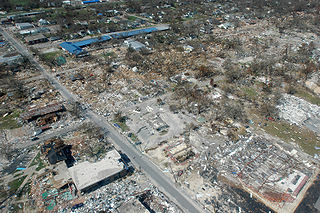
An actuary is a professional with advanced mathematical skills who deals with the measurement and management of risk and uncertainty. The name of the corresponding field is actuarial science which covers rigorous mathematical calculations in areas of life expectancy and life insurance. These risks can affect both sides of the balance sheet and require asset management, liability management, and valuation skills. Actuaries provide assessments of financial security systems, with a focus on their complexity, their mathematics, and their mechanisms.

Actuarial science is the discipline that applies mathematical and statistical methods to assess risk in insurance, pension, finance, investment and other industries and professions. More generally, actuaries apply rigorous mathematics to model matters of uncertainty and life expectancy.

The International Actuarial Association (IAA) is a worldwide association of local professional actuarial associations.

The Society of Actuaries (SOA) is a global professional organization for actuaries. It was founded in 1949 as the merger of two major actuarial organizations in the United States: the Actuarial Society of America and the American Institute of Actuaries. It is a full member organization of the International Actuarial Association.

The Casualty Actuarial Society (CAS) is a professional society of actuaries in North America specializing in property and casualty insurance.
The Institute of Actuaries was one of the two professional bodies which represented actuaries in the United Kingdom. The institute was based in England, while the other body, the Faculty of Actuaries, was based in Scotland. While the Institute and Faculty of Actuaries were separate institutions, they worked very closely together, and their professional qualifications and actuarial standards were identical. On 25 May 2010, voting members of the institute who took part in a ballot voted to merge the institute with the faculty, thus creating the Institute and Faculty of Actuaries, which came into being on 1 August 2010. The Institute of Actuaries ceased to exist on that date.

The Canadian Institute of Actuaries (CIA) is the national organization of the actuarial profession in Canada. It was incorporated March 18, 1965. The FCIA designation stands for Fellow of the Canadian Institute of Actuaries. As the national organization of the Canadian actuarial profession, the CIA serves the public through the provision by the profession of actuarial services and advice by: representing the Canadian actuarial profession in the formulation of public policy; promoting the advancement of actuarial science; educating and qualifying CIA members; ensuring that actuarial services provided by its members meet accepted professional standards; and assisting actuaries in Canada in the discharge of their professional responsibilities.
Enterprise risk management (ERM) in business includes the methods and processes used by organizations to manage risks and seize opportunities related to the achievement of their objectives. ERM provides a framework for risk management, which typically involves identifying particular events or circumstances relevant to the organization's objectives, assessing them in terms of likelihood and magnitude of impact, determining a response strategy, and monitoring process. By identifying and proactively addressing risks and opportunities, business enterprises protect and create value for their stakeholders, including owners, employees, customers, regulators, and society overall.
The Faculty of Actuaries in Scotland was the professional body representing actuaries in Scotland. The Faculty of Actuaries was one of two actuarial bodies in the UK, the other was the Institute of Actuaries, which was a separate body in England, Wales and Northern Ireland. While the Faculty of Actuaries and the Institute of Actuaries were separate institutions, they worked very closely together, and the professional qualifications and professional standards for actuaries were identical in each of them. On 25 May 2010, voting members of the Faculty who took part in a ballot voted to merge the Faculty with the Institute of Actuaries, thus creating the Institute and Faculty of Actuaries which came into being on 1 August 2010, superseding the Faculty of Actuaries which ceased to exist on that date.
The following outline is provided as an overview of and topical guide to actuarial science:
The American Academy of Actuaries, also known as the Academy, is the body that represents and unites United States actuaries in all practice areas. Established in 1965, the Academy serves as the profession's voice on public policy and professionalism issues.
The American Society of Pension Professionals & Actuaries (ASPPA) is a national organization for career retirement plan professionals. The membership consists of the many disciplines supporting retirement income management and benefits policy. ASPPA represents those who have made a career of retirement plan and pension policy work.
An enrolled actuary is an actuary enrolled by the Joint Board for the Enrollment of Actuaries under the Employee Retirement Income Security Act of 1974 (ERISA). Enrolled actuaries, under regulations of the Department of the Treasury and the Department of Labor, perform a variety of tasks with respect to pension plans in the United States under ERISA. As of July, 2020, there were approximately 3,500 enrolled actuaries.
Wendell Milliman (1905–1976) was a founder of Milliman, Inc., formerly Milliman & Robertson, one of the largest actuarial and business consulting firms in the world. Starting as the Pacific Northwest's only independent consulting actuary in a small two-room Seattle office in 1947, Milliman co-founded, with Stuart Robertson, a company that grew to encompass offices across the nation, first on the West Coast, then in Milwaukee, and then in more than 30 locations throughout the country. It also has offices in 16 countries across the globe. Based on a profit-sharing model that brings together independent consultants under a common corporate banner, Milliman, Inc. looked for and found new opportunities to provide actuarial services to insurers and pension planners as the United States dramatically changed and its economy grew during the post-World War II years.
Milliman, formerly Milliman & Robertson, is an international actuarial and consulting firm based in Seattle, Washington.
The International Association of Black Actuaries (IABA) is a tax-exempt, nonprofit professional organization that represents black actuarial professionals and students around the world. Its members include Fellows, Associates and students of the Society of Actuaries, the Casualty Actuarial Society, the Institute and Faculty of Actuaries, and Enrolled Actuaries originating from the United States, Canada, Caribbean and African nations.

The Institute and Faculty of Actuaries is the professional body which represents and regulates actuaries in the United Kingdom.
The actuarial credentialing and exam process usually requires passing a rigorous series of professional examinations, most often taking several years in total, before one can become recognized as a credentialed actuary. In some countries, such as Denmark, most study takes place in a university setting. In others, such as the U.S., most study takes place during employment through a series of examinations. In the UK, and countries based on its process, there is a hybrid university-exam structure.
Jeremy Edward Gold was an American actuary and economist. He was noted for his advocacy of the application of financial economics to pension actuarial practice and his criticism of actuarial standards and professionalism.

Edmund Ernest Cammack FAIA FCAS was an English actuary who was an early figure in the Aetna Life Insurance company and a founder member of the Casualty Actuarial Society of America.








